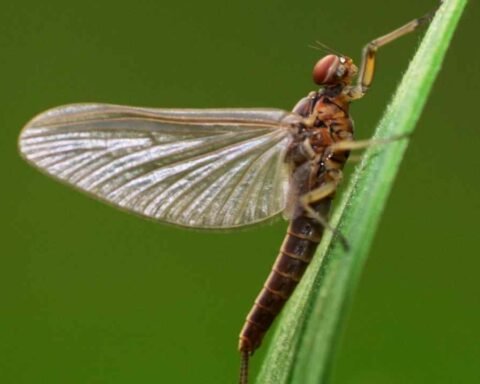Picture those hours after a long, grueling day at work. All you want to do is relax, and you’re looking for the quickest way possible.
So, you head over to your cozy corner by the fish tank, switch on the soothing, ambient light-and there’s your baby puffer fish! Darting playfully through the water, its charm removes stress in an instant.
Quite unlike a pup or kitty (but equally bewitching), these tiny aquatic wonders offer their own brand of tranquility. The unconditional companionship they provide can fill your life with a sense of purpose. Not to mention, they’re undeniably cute!
This guide is your go-to resource for all things puffer fish. Whether you’re a new fish enthusiast or a seasoned aquarist, keep reading to dive into this fascinating world.
Know Your Puffer Fish: Types and Habitats
Puffer fish, also known as blowfish, have two main categories: saltwater fish and freshwater fish. There are over 120 types of saltwater fish puffer species.
Some popular ones include the Dog Face Puffer, Spotted Puffer, and Porcupine Puffer. When choosing your pet, consider the type of tank you’re able to provide – your new friend’s happiness depends on the right puffer fish habitat.
Setting Up Your Fish Tank
Creating a comfortable fish tank set up is the first step to providing a great home. Your baby puffer fish may be small now, but they can require a tank size of 30 – 100 gallons, depending on their species.
The tank should have a good filtration system and water limits that match your baby puffer’s natural habitat. Keep the water temperature between 74°F and 81°F and pH levels between 7 and 7.6.
Add a Pop of Green
Plants are great tank decor. They add a lovely touch of green and help recreate your puffer’s natural hiding spots. Depending on the type of puffer fish you have, you might want to add freshwater plants like Java fern or saltwater options like seagrass.
Do keep in mind that some puffers find green stuff quite tasty. Consider using silk plants if your leafy friends keep disappearing.
Rocks and Caves: A Cozy Hideaway
Providing areas where your puffer fish can retreat will make them feel secure. Consider creating cave-like structures using larger rocks but avoid any sharp edges that could injure your pet.
Driftwood: A Natural Touch
Not only does driftwood provide more hiding spots and play areas for your puffer, but it also adds a beautiful, natural aesthetic to your tank. Be sure to choose aquarium-safe driftwood (available in your local pet store or online) to prevent any harm to your puffer.
Don’t Forget Flooring
Choosing the right base for your puffer fish tank is essential. Fine gravel or sand works well as it’s similar to the soft substrate of a puffer’s natural habitat. Remember, some puffers like to burrow, so avoid any gravel with sharp edges.
Consider Your Puffer Fish Diet
A balanced puffer fish diet is the key to healthy growth and vibrant color. Baby puffer fish are carnivores in the wild and love to feast on crustaceans and mollusks. So, think about including various foods like shrimp, brine shrimp, krill, clams, mussels, and even snails in their diet.
Remember to switch it up now and then. Just like their owners, puffer fish love a bit of variety in their meals.
Health and Wellness: Maintaining a Healthy Environment
You’ll notice that puffer fish are sensitive, especially to their environment. So, regular maintenance of their tank helps keep them happy. This involves regular water changes-around 10% to 25% each week.
Also, keep an eye on the pH, ammonia, nitrite, and nitrate levels to ensure they align with your puffer fish’s needs. Ammonia levels should be at 0. Puffer fish are quite responsive to ammonia and even small amounts can harm them.
Like ammonia, nitrite levels should also be at 0 as well. Nitrite can harm your fish’s ability to carry oxygen in their blood.
As for nitrate, although it’s less toxic than ammonia and nitrites, high levels can still be harmful. Keep nitrate levels below 15 ppm.
Shopping for Your Baby Puffer Fish
You’ll be pleased to know that you can buy fish online these days. You’ll find an array of species to choose from. Just be sure to choose a reliable source to ensure the health and quality of your new pet.
A reputable fish seller will give detailed information about the fish they’re selling, including its species, origin, and age. This shows they have in-depth knowledge of fish care and want to ensure you make an informed decision.
Good fish sellers care about their customers. Quick and helpful responses to your queries show that they’re invested in your fish-hunting journey and care about meeting your needs.
Finally, and most importantly, good fish sellers will display clear photographs of the fish they’re selling. They’ll showcase their health and beauty-a sure sign they take pride in the pets they offer!
Average Cost of Puffer Fish
The cost of a puffer fish depends on its species, size, and coloration. The Dwarf Puffer species is the most affordable. Prices can start at just $2 and go up to around $10.
Red-tailed puffers range in price from $10 to over $20. Other species, like the South American Puffer and Mbu Puffer, can be pricey. Costs start at $50 and reach up to $100 or more.
Keep in mind that these prices are for purchasing fish. Other costs must be taken into consideration, such as tanks, food, and filtration systems.
Taking Fish Care to the Next Level
Navigating the world of baby puffer fish can feel like a shocking dive into cold water at first. But once you’re in, it’s a joyful swim. Sure, you’ll need the perfect tank setup and a nutritious diet of mollusks and crustaceans, but the rewards are worth it.
If you’re buying puffer fish online, make sure the seller is reputable. You can do this by checking out the details on their pets and inspecting photos.
Visit our blog for more tips and pet products. We’ll show you how to take care of your pets in a way that’s comfortable for them and nurturing for you!








